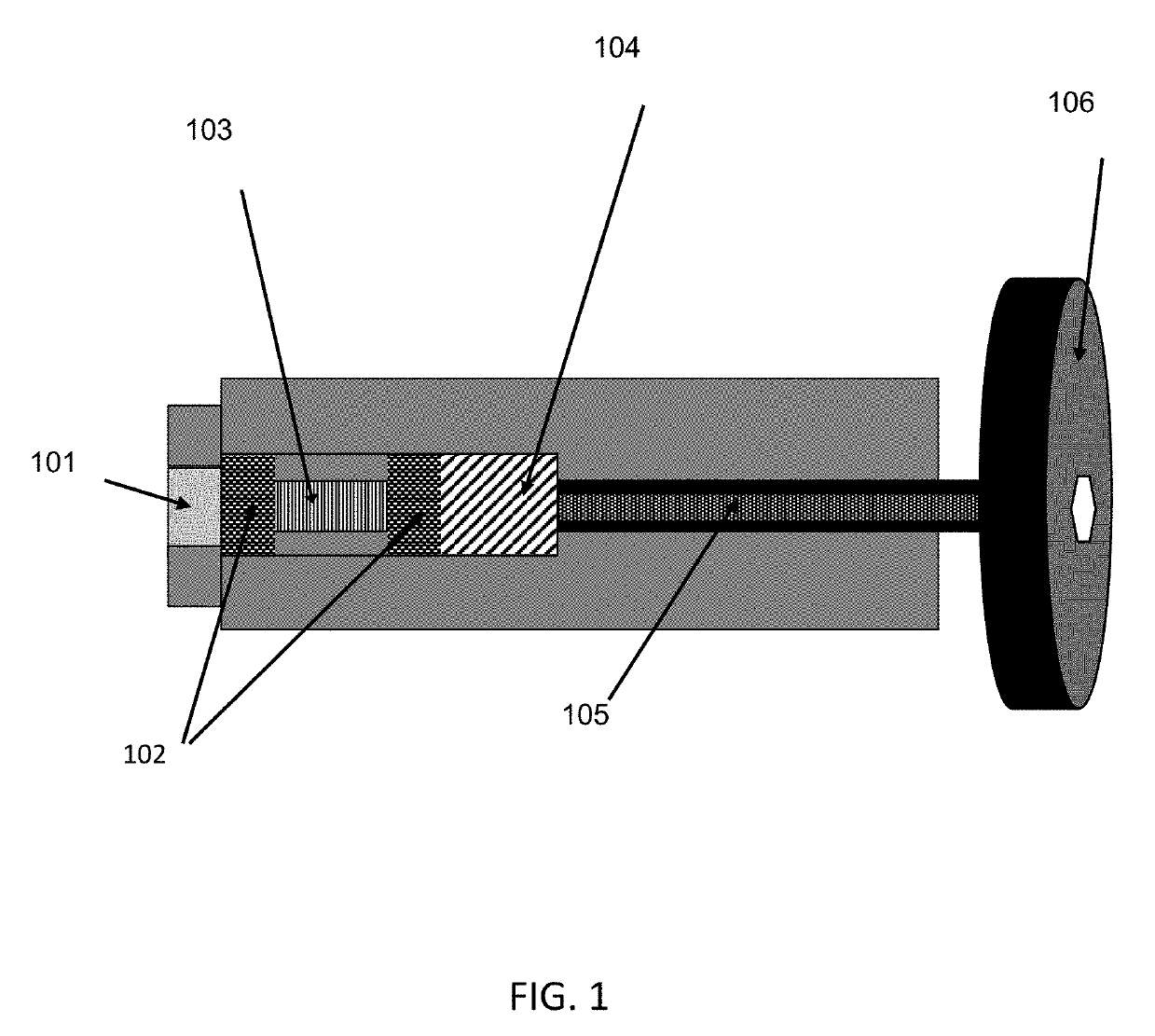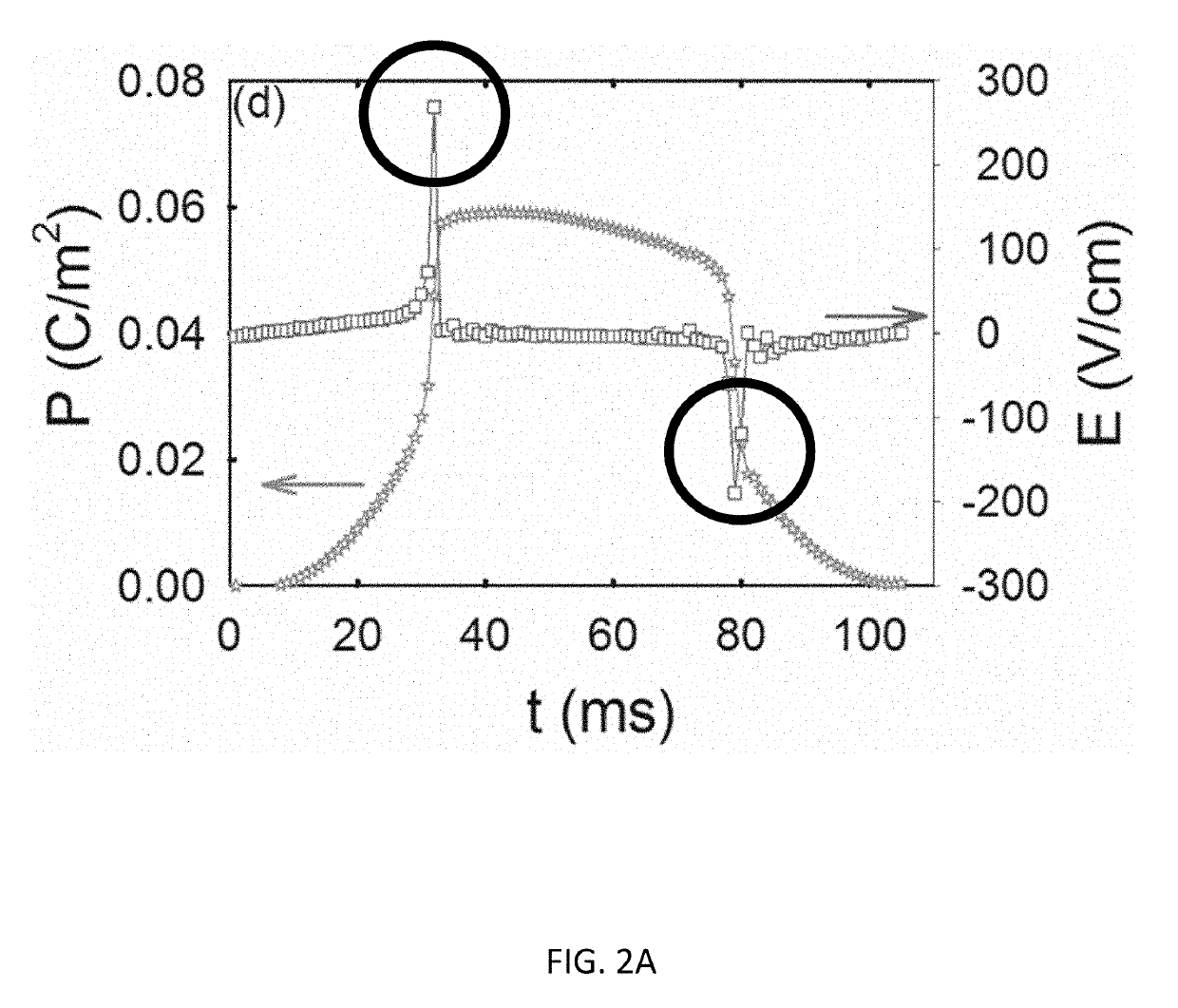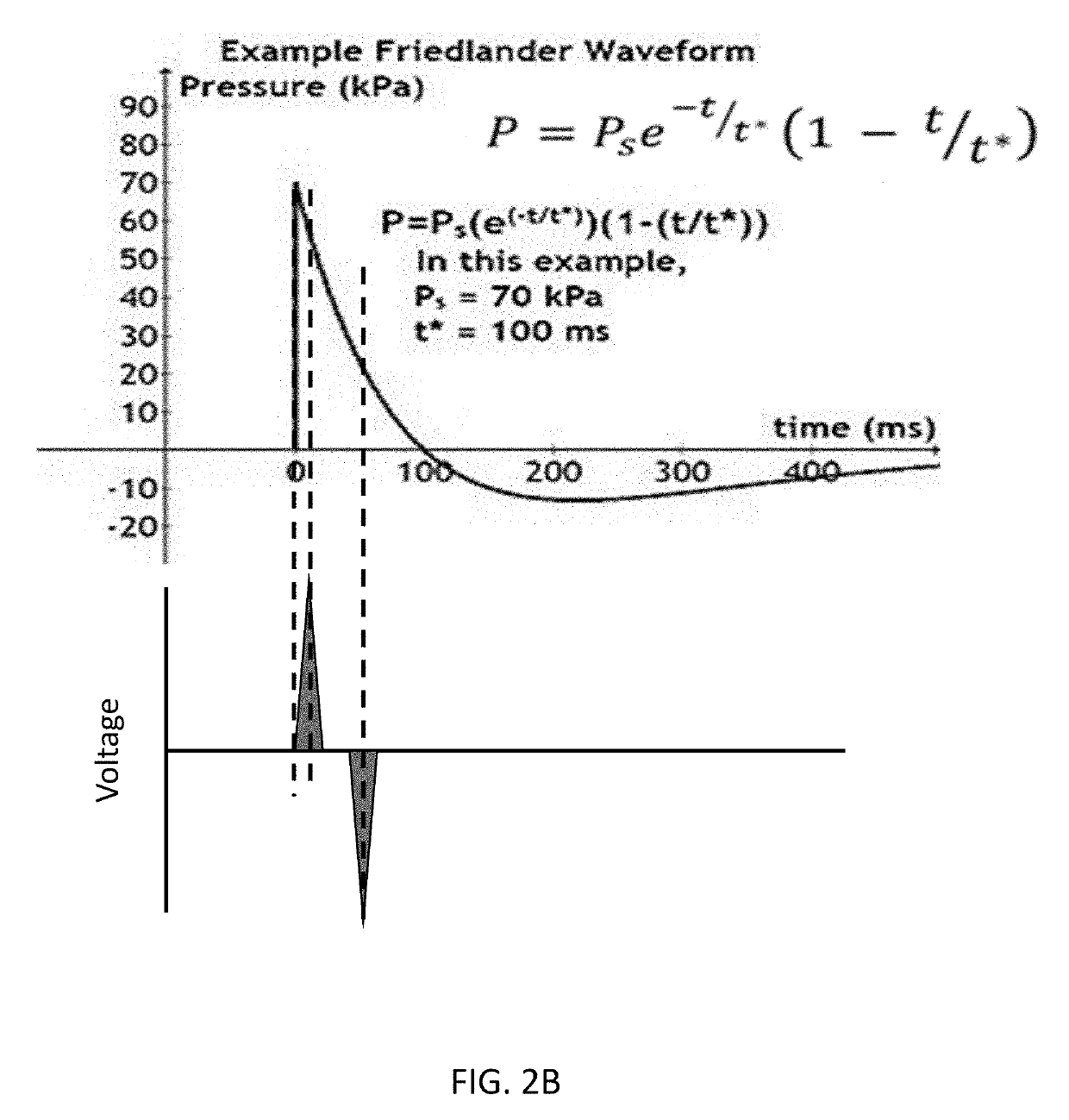Phase Transformation in Relaxor Ferroelectric Single Crystals for Blast Sensor
- Summary
- Abstract
- Description
- Claims
- Application Information
AI Technical Summary
Benefits of technology
Problems solved by technology
Method used
Image
Examples
examples
[0020]PIN-PMN-PT single crystals were purchased from CTG Advanced Materials and were 4×4×12 mm in size. Crystals were (011) cut and electrically poled with Cr / Au electrodes on the (011) faces. This domain engineering is necessary to be able to induce a rhombohedral to orthorhombic phase transformation with the application of uniaxial stress along the direction of the crystal (long axis).
[0021]An induced phase transformation occurs at some critical stress (σc) that can be accurately determined for each crystal, as shown in the stress-strain curve in FIG. 2(a) of Moyet et al., “Non-resonant electromechanical energy harvesting using inter-ferroelectric phase transitions” Appl. Phys. Lett. 107, 172901 (2015), which is incorporated herein by reference for the purposes of disclosing techniques relating to PIN-PMN-PT crystals. As the crystal is stressed past σc, a large voltage spike of ˜800 V was produced as well as a large jump in strain. Both of these occur with a rise time of <100 μs ...
PUM
 Login to View More
Login to View More Abstract
Description
Claims
Application Information
 Login to View More
Login to View More - Generate Ideas
- Intellectual Property
- Life Sciences
- Materials
- Tech Scout
- Unparalleled Data Quality
- Higher Quality Content
- 60% Fewer Hallucinations
Browse by: Latest US Patents, China's latest patents, Technical Efficacy Thesaurus, Application Domain, Technology Topic, Popular Technical Reports.
© 2025 PatSnap. All rights reserved.Legal|Privacy policy|Modern Slavery Act Transparency Statement|Sitemap|About US| Contact US: help@patsnap.com



